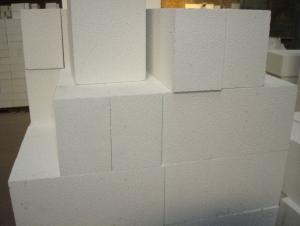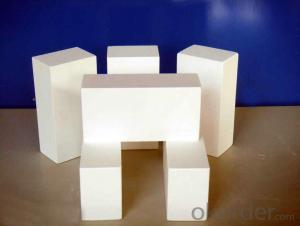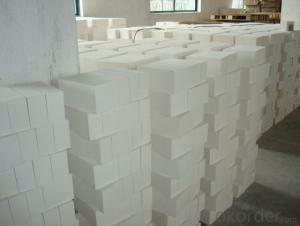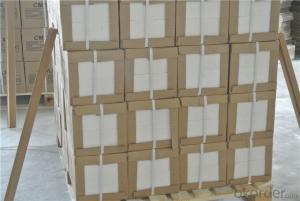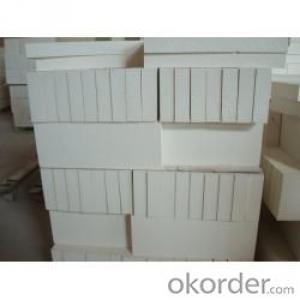Light Weight Insulation Refractory Clay Fire Brick for Industry Furnaces
- Loading Port:
- Shanghai
- Payment Terms:
- TT OR LC
- Min Order Qty:
- 1 m.t.
- Supply Capability:
- 1000 m.t./month
OKorder Service Pledge
OKorder Financial Service
You Might Also Like
Thermal Insulation Fire Clay Brick
Refractory brick is a block of refractory ceramic material used in lining furnaces, kilns, fireboxes, and fireplaces.
We provide high quality Refractory Fire Bricks that are used on wide range in the various industries like Cement, Glass and Steel. Refractory Fire Bricks are provided as per the quantity and specifications required by the customers. We provide an extensive range of Refractory Fire Bricks at reasonable prices that depend upon the quantity ordered.
Application
Insulating Fire Brick are used for the lining of converter, alternating current arc furnace, direct Current arc furnace and the ladle slag line, etc.
Company Advantage
(1)Long Insulating Fire Brick manufacture history: 25 years manufacturer
(2)Advanced equipment
(3)Diversification of production standards: ISO ANSI FEPA JIS ASTM
(4)Flexible payment: T/T L/C D/P D/A
(5)Professional marketing team and after-sale service
Insulating Fire Brick main feature:
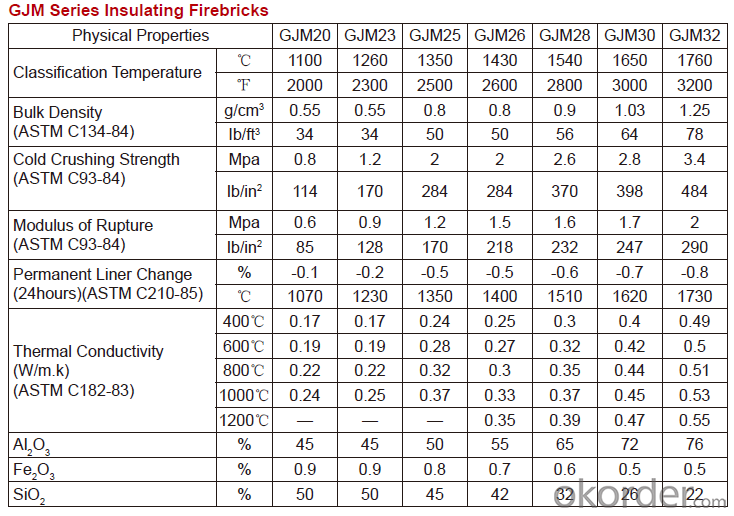
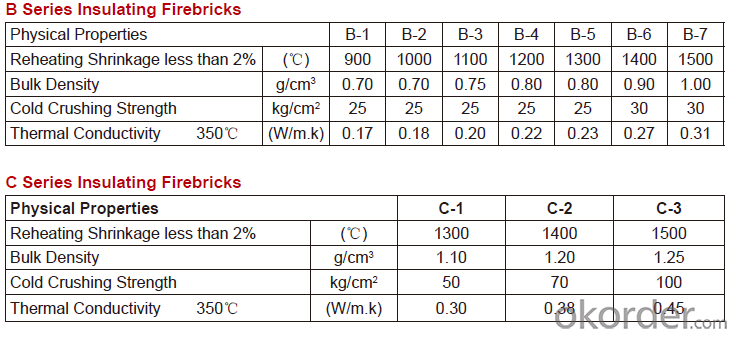
Equipment
1 unit of Ceramic Abrasive (SG Abrasive) pilot production line
2 units of Compact grain Abrasive pilot production lines
1 unit of high-end coated abrasives (abrasive cloth) production line
2 units of Boron Carbide production lines
3 large flexible crushing and sieving lines for grit production lines
6 units of 5000KVA-10000KVA dumping type electric arc furnaces for Brown Fused Alumina fusion
Q1 What’s the transport method?
A1 FCL delivery goods with wooden pallet or wooden case by sea; If LCL delivery, must with wooden case; Sometimes need open top, flat rack or bulk cargo.
Q2 What’s the required payment term?
A2 Generally 30% TT as the prepayment, 70% TT before delivery. If need, 100% Irrevocable Letter of Credit or negotiation.
Q3 Which country are our products exported to?
A3 Apart from entire Chinese market, the US, Russia, Japan, Korea, Australia and some Southeast Asian Nations.
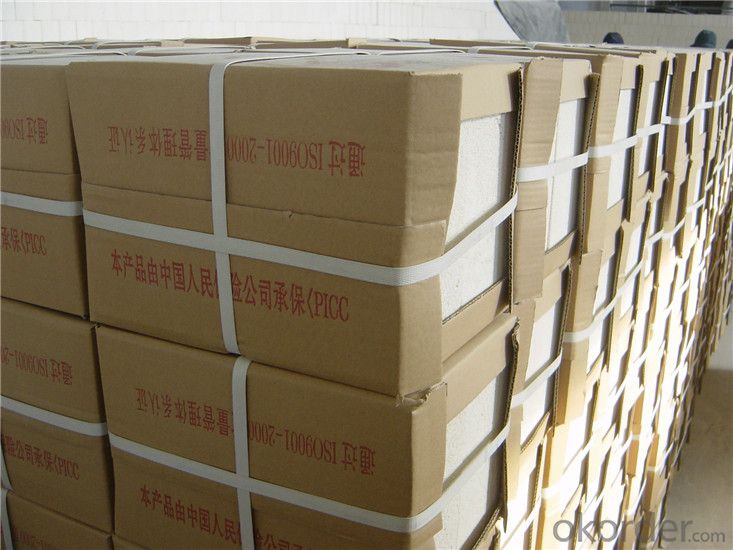

- Q:Are insulating fire bricks resistant to flame penetration?
- Indeed, the resistance of insulating fire bricks to flame penetration is undeniable. Crafted from materials boasting elevated melting points and exceptional thermal insulation properties, these bricks are engineered to endure extreme temperatures and thwart the infiltration of flames. Consequently, they are frequently employed in scenarios necessitating insulation and safeguarding against heat, including furnaces, kilns, and fireplaces. The impeccable composition and structure of insulating fire bricks confer upon them an extraordinary capacity to withstand flame penetration, thereby efficaciously confining and regulating the propagation of fire.
- Q:Can insulating fire bricks be used in fireplaces?
- Yes, insulating fire bricks can be used in fireplaces. They are designed to withstand high temperatures and provide excellent insulation, making them suitable for lining the inside of fireplaces.
- Q:Can insulating fire bricks be used in high-temperature insulation boards?
- Indeed, high-temperature insulation boards can utilize insulating fire bricks for their thermal insulation needs. These bricks are specifically engineered to endure extreme temperatures while offering exceptional thermal insulation. They find widespread use in various applications demanding insulation under elevated temperatures, including kilns, furnaces, and fireplaces. By incorporating insulating fire bricks into high-temperature insulation boards, one can effectively reduce heat loss and uphold a consistent temperature. Nevertheless, it is crucial to assess the particular prerequisites of the application and verify the compatibility of the insulating fire bricks with the insulation board material and installation technique.
- Q:What is the lifespan of insulating fire bricks?
- The lifespan of insulating fire bricks can vary depending on various factors such as the quality of the bricks, the conditions they are exposed to, and the usage. However, on average, insulating fire bricks can last anywhere from 5 to 20 years.
- Q:Can insulating fire bricks be used in contact with molten metals?
- Yes, insulating fire bricks can be used in contact with molten metals. Insulating fire bricks are designed to handle high temperatures and can withstand the heat generated by molten metals. They have excellent insulation properties and can effectively protect against heat transfer, making them suitable for various applications involving molten metals.
- Q:Are insulating fire bricks resistant to hydrofluoric acid?
- Insulating fire bricks are not resistant to hydrofluoric acid. Hydrofluoric acid is a highly corrosive substance that can attack and dissolve many materials, including fire bricks. It is important to handle hydrofluoric acid with extreme caution and use appropriate protective equipment when working with this hazardous substance.
- Q:What is the typical bulk density of an insulating fire brick?
- The typical bulk density of an insulating fire brick is usually around 0.6 - 1.2 grams per cubic centimeter (g/cm³). However, it is important to note that the actual bulk density may vary depending on the specific composition and manufacturing process of the insulating fire brick.
- Q:Can insulating fire bricks be used in steam boilers?
- Indeed, steam boilers can utilize insulating fire bricks. The purpose of insulating fire bricks is to possess minimal thermal conductivity, enabling them to efficiently retain and impede the transmission of heat from one side to the other. This renders them suitable for implementation in steam boilers, as they aid in enhancing energy efficiency by diminishing heat loss. Moreover, insulating fire bricks exhibit resistance to elevated temperatures, rendering them fitting for deployment in the steam boiler's high-temperature surroundings.
- Q:Can insulating fire bricks be used in the construction of radiant tubes?
- Yes, insulating fire bricks can be used in the construction of radiant tubes. These bricks are designed to have low thermal conductivity, which makes them an excellent choice for insulating applications such as radiant tubes. They can help to minimize heat loss and improve the efficiency of the radiant heating system.
- Q:Can insulating fire bricks be used in the construction of ladles?
- Yes, insulating fire bricks can be used in the construction of ladles. Insulating fire bricks are made from lightweight materials that have excellent thermal insulation properties. This makes them ideal for applications where heat needs to be retained or controlled, such as in the construction of ladles used in metal or glass industries. The insulating fire bricks help to reduce heat loss, improve energy efficiency, and maintain the desired temperature within the ladle. Additionally, their lightweight nature makes them easier to handle and install in ladle constructions. Therefore, insulating fire bricks can be a suitable choice for ladle construction, providing the necessary thermal insulation and durability required for these high-temperature applications.
1. Manufacturer Overview |
|
|---|---|
| Location | |
| Year Established | |
| Annual Output Value | |
| Main Markets | |
| Company Certifications | |
2. Manufacturer Certificates |
|
|---|---|
| a) Certification Name | |
| Range | |
| Reference | |
| Validity Period | |
3. Manufacturer Capability |
|
|---|---|
| a)Trade Capacity | |
| Nearest Port | |
| Export Percentage | |
| No.of Employees in Trade Department | |
| Language Spoken: | |
| b)Factory Information | |
| Factory Size: | |
| No. of Production Lines | |
| Contract Manufacturing | |
| Product Price Range | |
Send your message to us
Light Weight Insulation Refractory Clay Fire Brick for Industry Furnaces
- Loading Port:
- Shanghai
- Payment Terms:
- TT OR LC
- Min Order Qty:
- 1 m.t.
- Supply Capability:
- 1000 m.t./month
OKorder Service Pledge
OKorder Financial Service
Similar products
New products
Hot products
Related keywords
